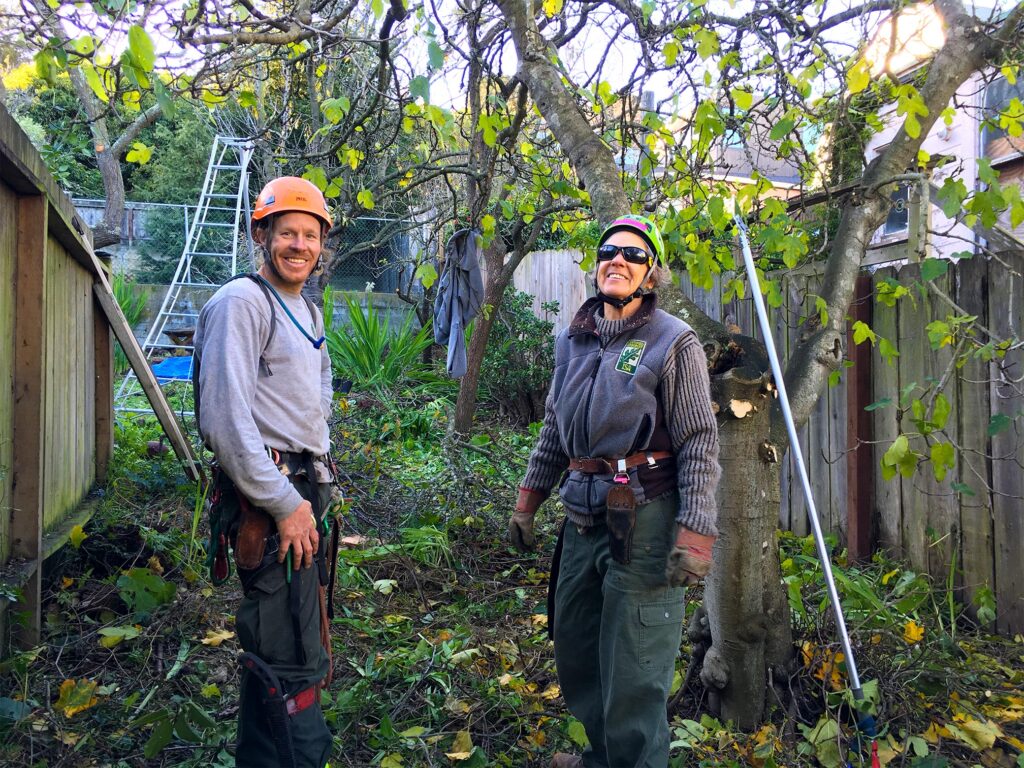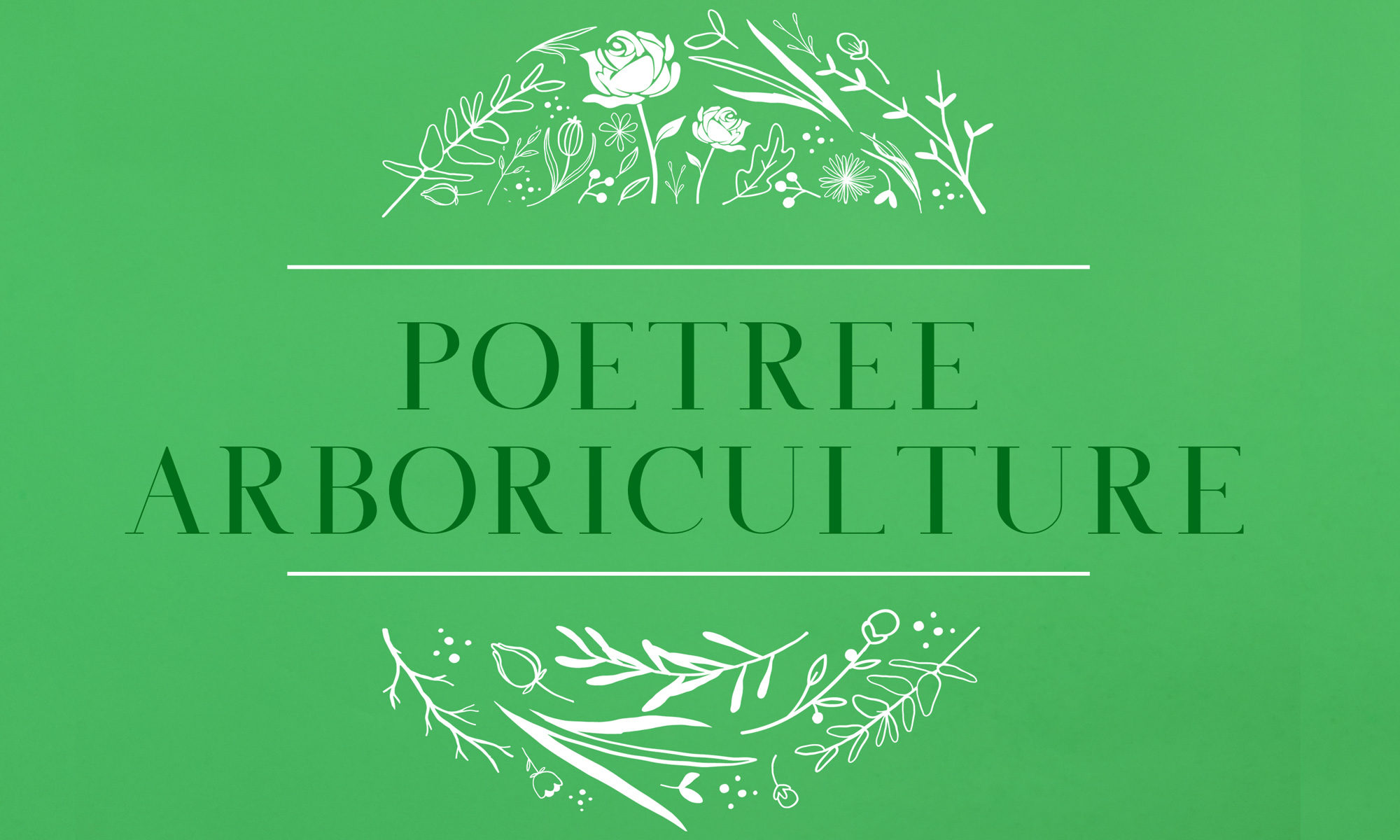As a Certified Arborist and Certified Aesthetic Pruner I bring over 20 years of experience to the care and pruning of trees, shrubs and other woody plants. We know the earth cannot exist without trees and even one tree in your care can make a difference. Skilled structural pruning and an eye for aesthetics, and often recommendations to improve the horticultural conditions of your trees can add longevity, value, and enjoyment in your life.
Fine Pruning
Trees have different habits depending on their species – pyramidal, rounded, spreading, columnar, vase shape and more. Then each tree or shrub also has its unique character. Fine pruning involves not only understanding proper structure but also observing the special characteristics of the individual tree. This is especially important on a focal point tree or shrub. Aesthetic pruning also requires an artistic eye so the plants in your garden feel integrated both with each other and surrounding hardscape as well.
Here are a few examples:
Lolipop Oak Sequence
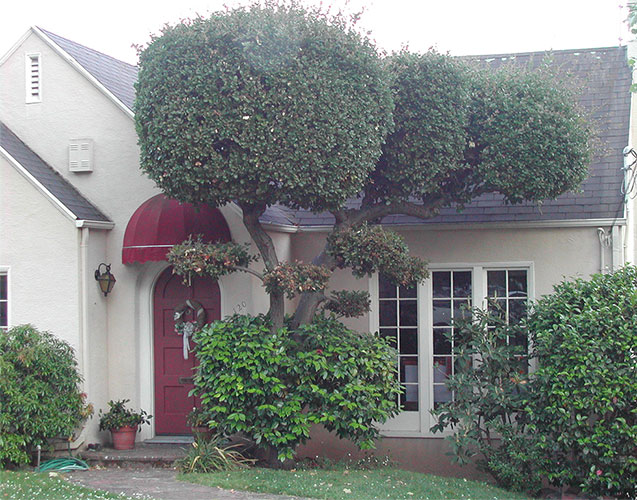
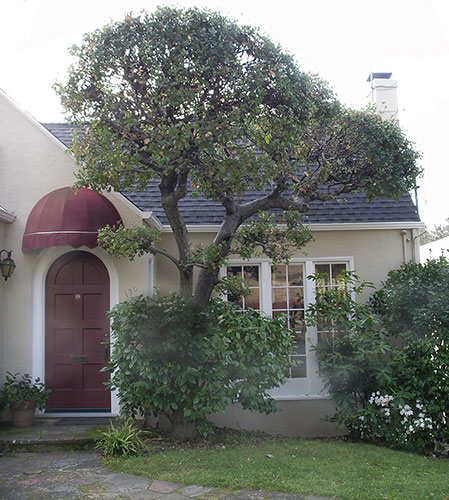
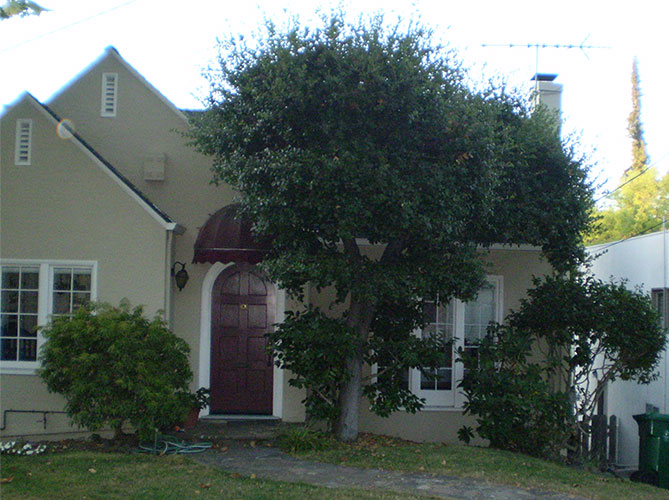
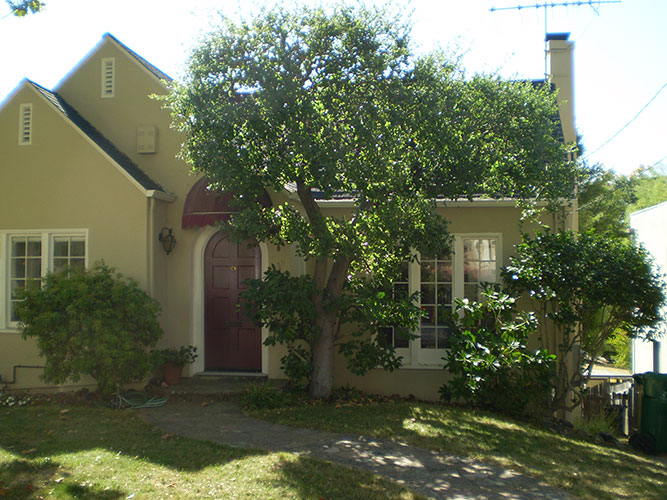

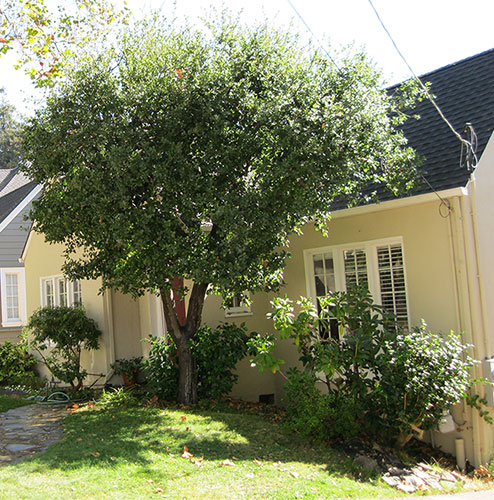

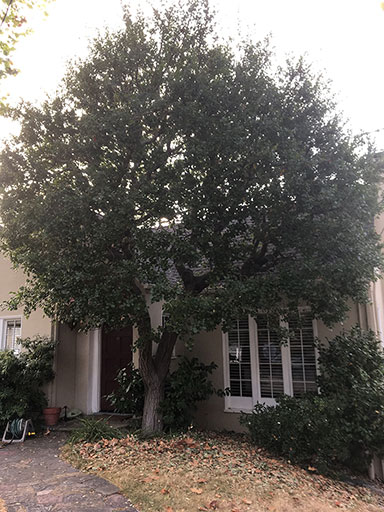
The Lolipop oak now in its 17th year graces the front garden of my clients house.
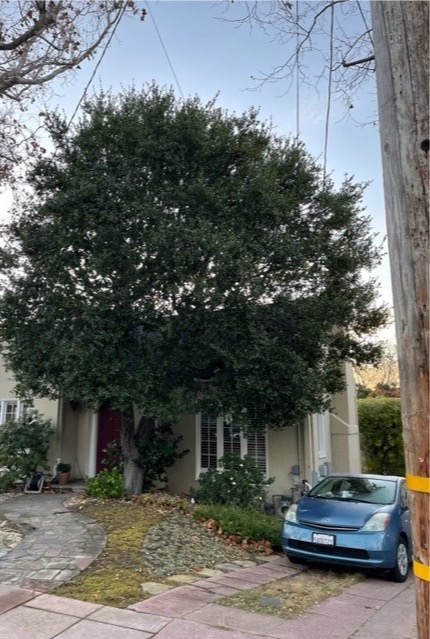
Coast live oak, Quercus agrifolia crown restoration, ten-year sequence restoring and balancing canopy. The tree had been sheered for over 35 years and the client told me she was tired of doing it and wanted me to prune it. I told her I would but I would restore it to its natural habit and it may take ten years. She said fine and we see each other annually for this pruning project.
When a tree has been sheered this long it loses all its inner foliage and the branches become twisted and basically each of the topiary lollipops was solid wood inside the outer layer of leaves. Also, because of the way layout of the house the tree cannot grow too wide on the east side. Furthermore, the west side and the strong side wants to grow toward the sun, wider and wider. You will see the careful balancing of the canopy over the years. It also took time for the tree to fill in branches and foliage where there had been none due to the form of the topiary.
Another example:
Lace leaf maple, Acer palmatum matsumurae Atropurpureum dissectum cascading over waterfall
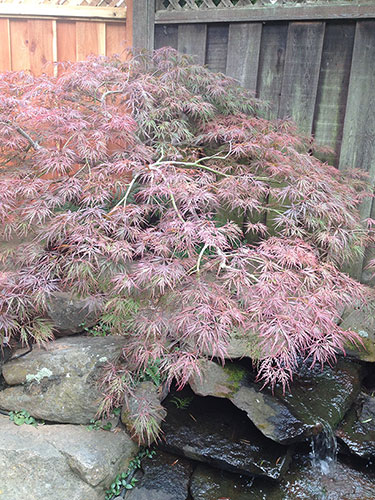
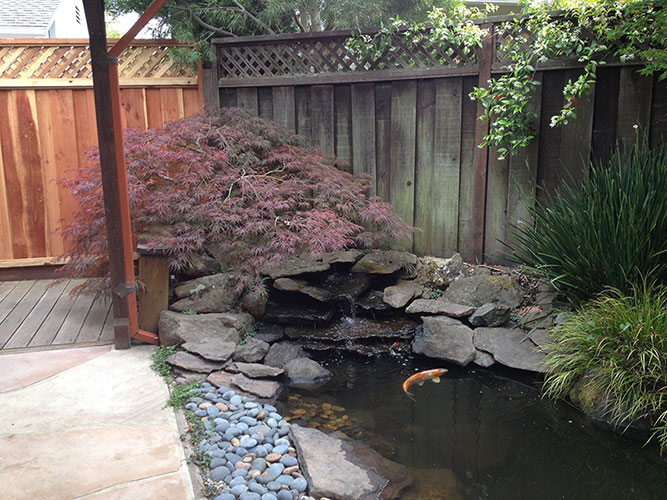
Consulting
I initially come to gardens and landscapes for an initial consultation which is the only way I take on new clients. We walk the garden together and I assess the landscape for horticulture conditions, plant health, general care the property owner can do themselves if they wish, irrigation, visual assessment for pests and pathogens, soil grade in relation to the trunk flare and additional planting suggestions if the client is interested. In the consultation, I advise changes that would benefit the horticulture conditions of the trees, shrubs and soil in general. We look at the structure of trees and I talk about what they need which is especially important for species that are large or will be in time.
Preservation Reports & Landscape Protection during Construction or renovation: Preservation reports help clients maintain the health and vitality of trees when in conflict with construction or development, both on private and public rights of way. Clients typically say “oh, my contractor would never damage my plants or soil. Then I receive a call “please come over as the painter “hacked” back the plants or did a washout in the landscape or worse. Depending on the size of the project often a simple protection or preservation plan can be attached to the contract with your company performing the services.
Landscape Preservation During Development: General Specification
Care of Trees
Over twenty years experience understanding of the interfaces between arboriculture, forestry, urban forestry and horticulture. Caring for trees includes selecting the right tree for the right place, making sure it is a healthy specimen, pruning for young tree care, structuring for health and longevity and integrating all the woody plants aesthetically and with similar cultural needs in the garden. As a Certified Arborist and Certified Aesthetic Pruner I not only look at the individual trees or shrubs but how they work together and how they make sense to the client’s needs. This may include the need for dappled light or pruning trees so they still screen from neighbors and best practices for framing views. Also, often trees and shrubs in gardens may be neglected or ill treated like being topped in the past and require crown restoration. Restoring woody plants to their natural habit is one of my specialties
Home Garden Design and Renovation, 2017
Read about this San Francisco Noe Valley garden including pruning the seven main orchard trees, restoring the soil and designing a completely accessible site including three outdoor rooms for lounging, a California native meadow, new design and plants to complement the overstory orchard, a pond to catch and disseminate runoff from an adjoining property and of course nurture the focal point fruit trees.
The Aesthetic Pruners Association (APA)
APA is a non profit association established to promote and develop the craft of aesthetic pruning and support professional pruners in their work. The APA encourages the growth and development of the aesthetic pruning profession and its business practices.
